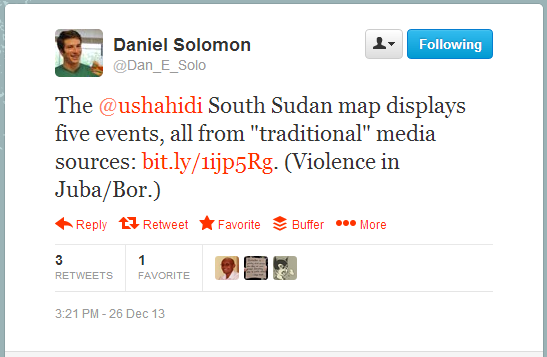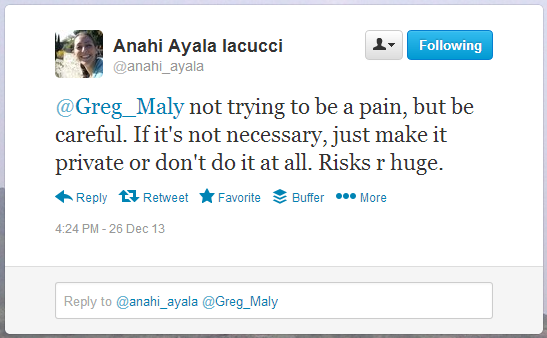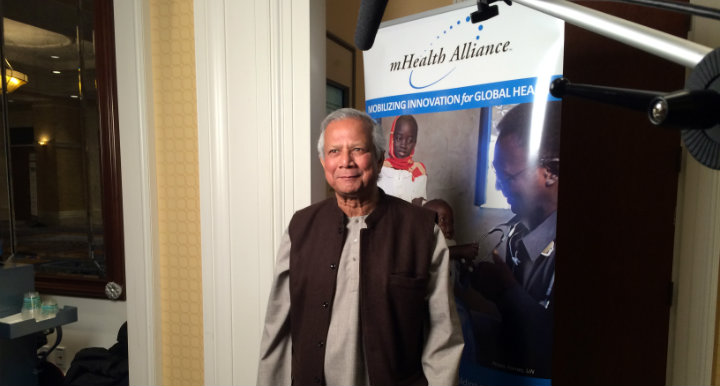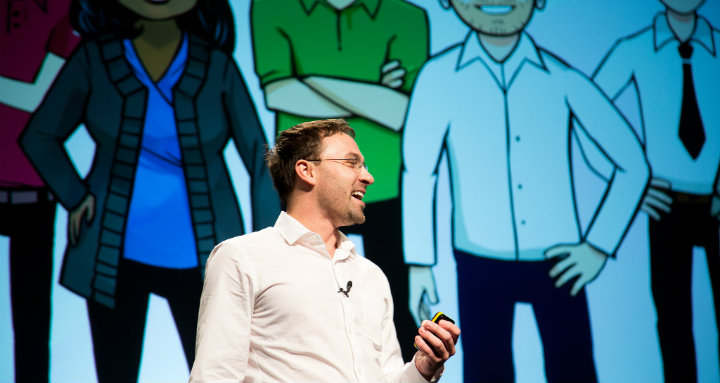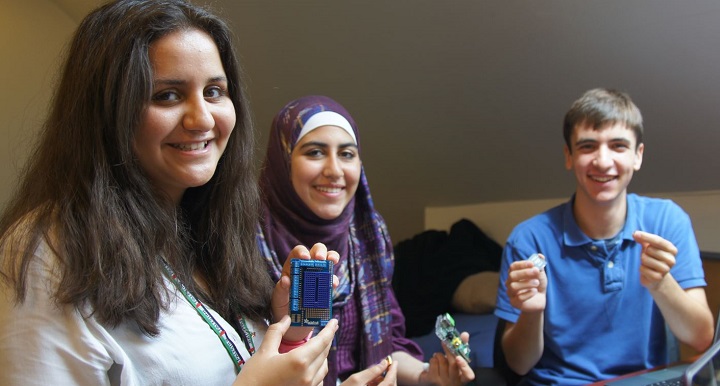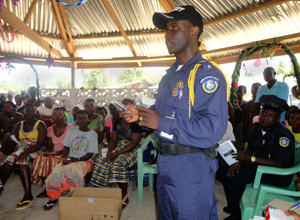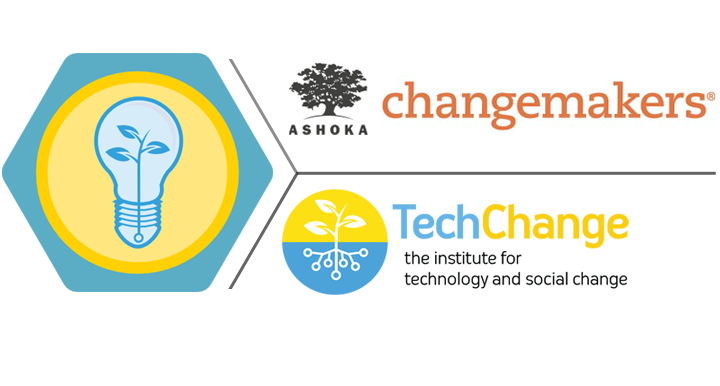Spreading violence in South Sudan threatens thousands of civilian lives, political stability in the region, and even outbreaks of transmissible disease (NYT). As the fog of the initial outbreak of war begins to clear, the question becomes how the international community should begin to address this hot conflict, and prepare for what is likely to be a global humanitarian response effort. Student networks such as STAND are writing open memorandums to policymakers, while volunteer technical communities such as contributors to The Enough Project and the Satellite Sentinel Project (SSP) are sending their pleas straight to the media. But as we move from advocacy to response, a number of core questions come to mind:
- Who are the key actors?
- What are their motivations?
- What are our windows of opportunity to see a reduction in violence?
And as these questions get answered – how do organizations ensure that their work is complementary?
Coordinating the Information Flow
With information flows from the region taking the form of emails, phone calls, text messages, and videos from people’s mobile phones, connecting the dots is the entire point of organizations such as the Digital Humanitarian Network (DHNet), whose activation TechChange was proud to be part of last year, and reliefweb.int – a well known asset for first responders. But because South Sudan is still in the midst of a hot conflict, actors coordinating with one another must take into consideration the lives of individuals who are still in the region to ensure that no additional harm is done through the sharing of this information.
The good news is that there are guidelines for such a response effort, not least from what has been provided by the lessons from the Libya Crisis Map by OCHA, who are also keeping tabs on the current crisis (see image below). Andrej Verity, an Information Management Officer at UN-OCHA identified three specific ethical issues in Libya:
1. Identify. We did not want any information provided in the LCM that could be used to identify the individual who reported.
2. Location. To avoid anyone from being able to pinpoint anyone reporting, the data was generally anonymized to the centroid of the city it was reported from.
3. Do No Harm. Given the situation in Libya was conflict-based, we needed to ensure that whatever we did minimized the chance of causing anyone harm.
![Sudan: Humanitarian Snapshot (30 September 2013) [UN-OCHA]](https://lh4.googleusercontent.com/D6kr6-liIK57PxguXfDAUXIE0xSUocSP1mmgjeXgY2Vya5tIPr3QwCzpfM5Qqb7f-xj2jprp7oPTCARCNlHEu2dZ_tpVd0vdONVo8xWkMwJUDo7M5FYdXwqyEQ)
Connecting Grassroots to Government: South Sudan Watch
Connecting grassroots volunteer networks to government response is not an easy task, as our partners at the Wilson Center have explored these challenges in depth. Moreover, their recent workshop report lists “[f]actors obstructing the adoption of crowdsourcing, social media, and digital volunteerism approaches often include uncertainty about accuracy, fear of liability, inability to translate research into operational decision-making, and policy limitations on gathering and managing data.”
These are not small challenges, but one recent effort deserves recognition: A recent Ushahidi deployment for South Sudan Watch. According to the About page, it is designed to be just such a centralized reporting mechanism for watchers of the current conflict in South Sudan. Also worth noting, is that the entry forms have been modified to aid in conflict analysis, and the public information restricted to protect those on the ground and report contributors.
Will it make a difference? Maybe. Rob Baker of Ushahidi (and until recently a Presidential Innovation Fellow) shared with us:
“It won’t be easy, but we believe it is necessary to try. We can learn from past examples to help on the ground — nobody is here to just make a map, but hopefully to improve the situation on the ground through a better understanding of what is happening through technology and crowdsourcing.”
If you are interested in learning more, please do check out the live Ushahidi deployment and see how you can contribute. We’ll continue to add more information as it becomes available.
South Sudan Watch: http://southsudanwatch.ushahidi.com/
Want to learn more about how digital mapping and other technology like social media and and mobile phones are addressing conflicts around the world? Enroll now in TC109: Technology for Conflict Management and Peacebuilding, which starts January 13, 2014.

